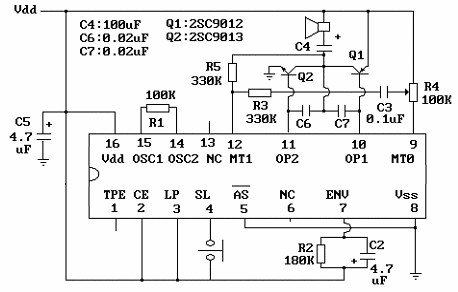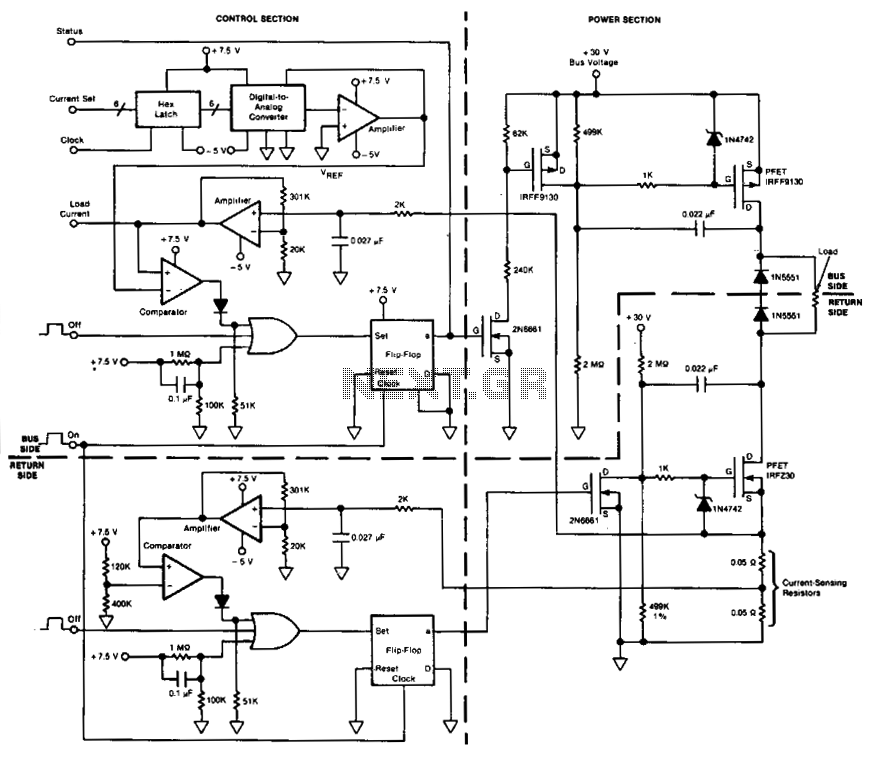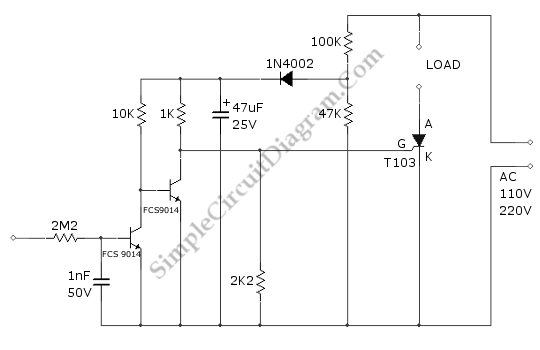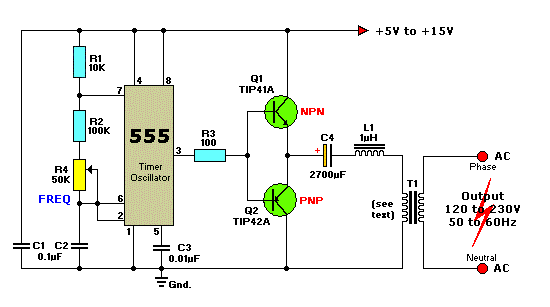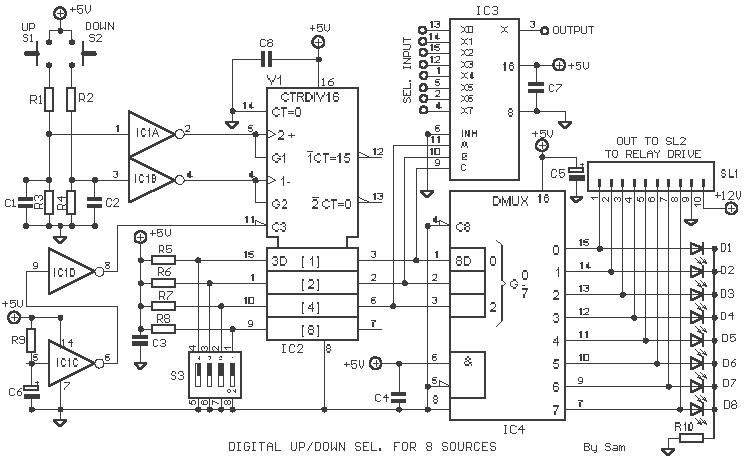
Touch sensor switch using inverters

This touch sensor switch is designed using inverters (N1, N2) and several common electronic components. In the standby state, a signal is produced by oscillator N3/N4 at the inputs of N1. When the touch sensor is activated, the hand capacitance forms a bridge to the ground for the 1 MHz signal, causing the voltage signal at the input of N1 to decrease, resulting in a logical '1' output from N2. After the touch is released, a charge is stored in capacitor C4 through diode D1, which causes the output of N2 to briefly drop to a logical '0'.
The circuit employs two inverters, N1 and N2, which are essential for signal processing. The oscillator, composed of N3 and N4, generates a continuous 1 MHz square wave signal that serves as the input for the first inverter, N1. The touch sensor is designed to detect changes in capacitance when a hand approaches, effectively altering the input signal at N1. This change is crucial as it determines the logical state at the output of N2.
When the sensor is inactive, the signal from the oscillator maintains a logical high state at N1, which in turn keeps N2 outputting a logical '1'. The introduction of a hand near the sensor modifies the capacitance, creating a capacitive coupling to ground. This coupling reduces the input voltage at N1, leading to a drop in the output state of N2 to logical '0'.
Upon removing the hand from the sensor, capacitor C4 begins to charge through diode D1, allowing for a brief delay before the output of N2 returns to logical '1'. This delay is significant for applications requiring a momentary response to touch, providing a clear indication that the sensor was activated. The diode D1 plays a crucial role in ensuring that the charge does not discharge too quickly, thereby maintaining the output state for a short duration after the touch is released.
Overall, this touch sensor switch circuit is a practical example of how capacitive sensing can be implemented using basic electronic components, offering a reliable solution for touch-sensitive applications.This touch sensor switch can is designed using inverters (N1, N2)and some common electronic components. In standby state at the entrances of N1 there is a signal produced by oscillator N3/N4. At the touch sensor hand capacity forms a bridge to the ground for the 1MHz signal so that the voltage signal at the entrance of N1 decreases more (at the ex
it of N2 is logical 1). After the release of contact, a signal charge C4 through D1 Mhz, so the output of N2 is 0 logic after short time. 🔗 External reference
The circuit employs two inverters, N1 and N2, which are essential for signal processing. The oscillator, composed of N3 and N4, generates a continuous 1 MHz square wave signal that serves as the input for the first inverter, N1. The touch sensor is designed to detect changes in capacitance when a hand approaches, effectively altering the input signal at N1. This change is crucial as it determines the logical state at the output of N2.
When the sensor is inactive, the signal from the oscillator maintains a logical high state at N1, which in turn keeps N2 outputting a logical '1'. The introduction of a hand near the sensor modifies the capacitance, creating a capacitive coupling to ground. This coupling reduces the input voltage at N1, leading to a drop in the output state of N2 to logical '0'.
Upon removing the hand from the sensor, capacitor C4 begins to charge through diode D1, allowing for a brief delay before the output of N2 returns to logical '1'. This delay is significant for applications requiring a momentary response to touch, providing a clear indication that the sensor was activated. The diode D1 plays a crucial role in ensuring that the charge does not discharge too quickly, thereby maintaining the output state for a short duration after the touch is released.
Overall, this touch sensor switch circuit is a practical example of how capacitive sensing can be implemented using basic electronic components, offering a reliable solution for touch-sensitive applications.This touch sensor switch can is designed using inverters (N1, N2)and some common electronic components. In standby state at the entrances of N1 there is a signal produced by oscillator N3/N4. At the touch sensor hand capacity forms a bridge to the ground for the 1MHz signal so that the voltage signal at the entrance of N1 decreases more (at the ex
it of N2 is logical 1). After the release of contact, a signal charge C4 through D1 Mhz, so the output of N2 is 0 logic after short time. 🔗 External reference
